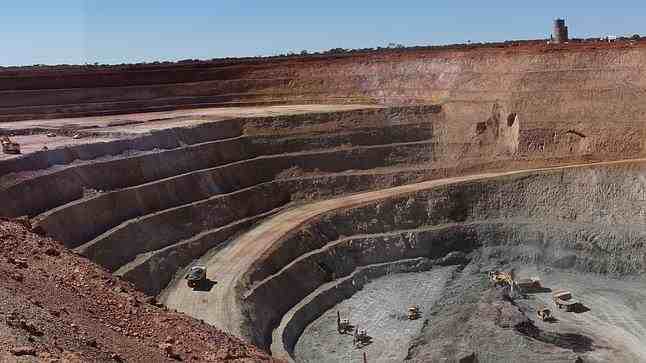A copper mine in Western Australia has announced it will build a 10.6MW solar PV array, with “6MW” of battery storage, to power an existing off-grid copper mine 900kms north east of Perth.
 Listed company Sandfire Resources says it has signed a contract with German-based juwi Renewable Energy to build the $40 million facility at the underground DeGrussa Copper Mine in Western Australia, and help power the copper treatment plant.
Listed company Sandfire Resources says it has signed a contract with German-based juwi Renewable Energy to build the $40 million facility at the underground DeGrussa Copper Mine in Western Australia, and help power the copper treatment plant.
It says it will involve the largest integrated off-grid solar array in Australia, has the potential to establish DeGrussa as an “industry leader in the use of renewable power for mining and processing operations.”
Funding is being coordinated by juwi, which will own and operate the facility. Sandfire’s cash contribution to the project will be less than $1 million.
juwi says that the 10.6MW solar array will incorporate 34,080 solar PV panel with single axis tracking of the sun. The solar energy produced will be used to reduce the consumption of more expensive diesel at the 20MW plant that currently exists at the mine. The plant is expected to be commissioned early next year.
The battery storage will be built to deal with intermittency, such as clouds passing over. The lithium-ion battery array will have peak capacity of 6MW, with 1.5MWh storage, essentially designed to give diesel generators time to power up to respond to changes in output. During the day, the solar array will most of the plant’s energy needs.
Andrew Drager, managing director of juwi Australia, said there were at least 10 other mines in Australia looking at a solar and storage option to help deflect high diesel prices.
Because of this, Degrussa would be a flagship project. “For mining companies risk is the key point,” Drager told RenewEconomy in an interview. “One 10-second down time can have a large cost impact. This will show other mines that those risks can be managed, and are not big technical risks.”
He said : “The system is at the forefront of transforming the remote power generation sector and the resource industry into one with a sustainable future.”
Juwi will finance, build and operate the plant, which will only get a 6-year power purchase agreement, typical of the mining industry. That has meant some gymnastics with the financing model, although Drager would not go into details.
Sandfire managing director Karl Simich said the company has been looking at solar for the last two years. He described it as a “low-risk renewable energy initiative” with a minimal capital requirement.
“The scale of this project will be an Australian and world first – a unique combination of an off-grid, high capacity solar power array which will be fully integrated with an existing diesel power station,” he said in a statement.
“It is a very manageable project which, importantly, will not impact on the efficiency or safety of our existing operations, while allowing Sandfire to make a solid contribution to the broader challenge of reducing CO2 emissions and potentially reducing our operating costs in the long run,” Simich said.
And it could be expanded. “It has the capacity to significantly reduce our medium and long-term power costs, especially with further extensions of the mine life of the DeGrussa Project.”









